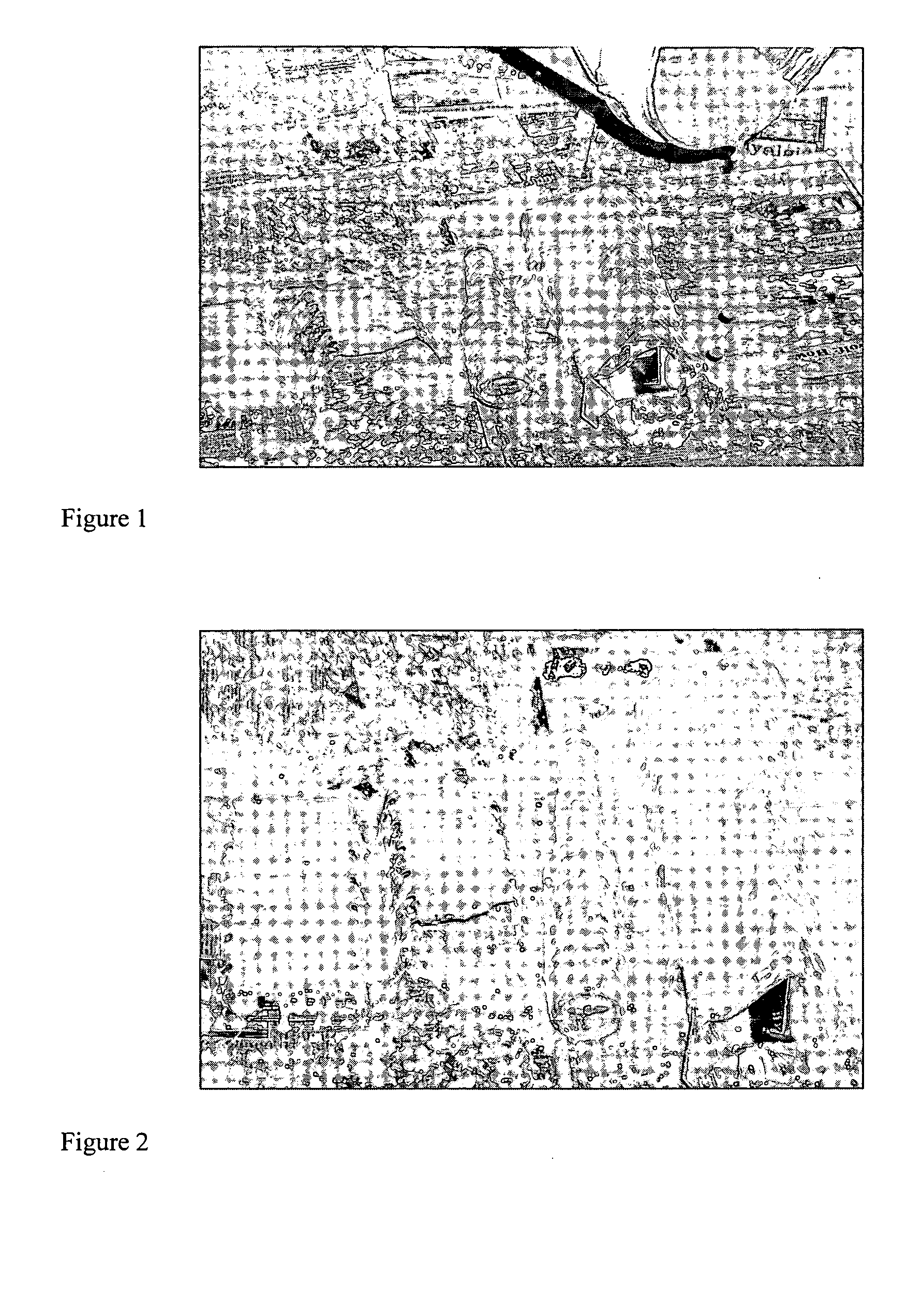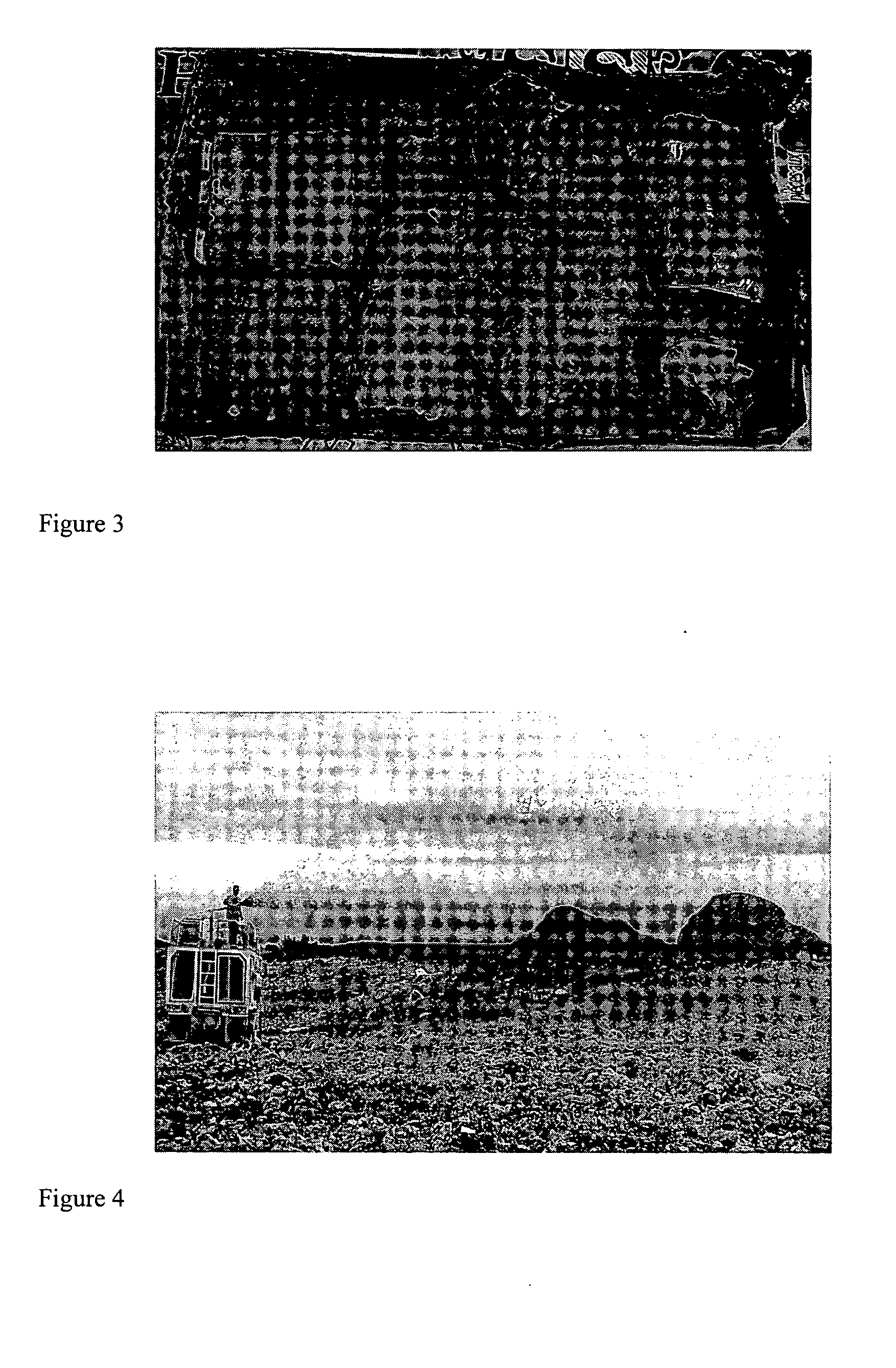Composition and method for forming a sprayable materials cover
a technology of synthetic cover and soil, applied in the direction of ceramic shaping apparatus, special surfaces, paving details, etc., can solve the problems of high labor cost and worker safety concerns associated with physical placement of such membranes, the use of soil daily cover also requires a significant amount of labor and heavy-duty equipment, and the traditional soil method of covering waste is less and less popular. , to achieve the effect of good performan
- Summary
- Abstract
- Description
- Claims
- Application Information
AI Technical Summary
Benefits of technology
Problems solved by technology
Method used
Image
Examples
example 1
[0054] A cover composition was designed utilizing constituents and parameters shown in Table 1. In this experiment, conventional Portland cement was used as a binder and latex emulsion was used as an adhesion enhancing agent. These constituents were mixed as previously discussed. The mixture was then applied as a cover on a tray of waste materials containing glass bottles and plastic wrapped wastes. The mixture had sufficient viscosity which adhered to the glass bottles and plastic wrappers, formed a continuous cover and hardened within a few hours. FIGS. 1 and 2 show the pouring of the slurry onto glass bottles and plastic bags. It can be seen that the slurry stuck onto the bottles and plastic wrappers very well and that a continuous cover formed on the surface of the bottles and plastic wrappers.
[0055] The cover over the glass bottles and plastic wrappers was placed in the ambient outdoor environment and exposed to sunlight and rain during the months of July, August and September...
example 2
[0057] In another experiment, ASTM Class C fly ash was used as a binder and redispersible polymer powder was used as an adhesion enhancing agent. These constituents were mixed as previously discussed. The mixture was then applied as a continuous cover on a tray of waste materials containing glass bottles and plastic wrapped wastes.
[0058] The cover over the tray of soil was placed in the ambient outdoor environment and exposed to sunlight and rain during the month of July for a period of more than four weeks and has undergone more than 20 cycles of wet and dry weather yet remains in excellent condition with minimal shrinkage and no cracking.
TABLE 2MixturePercentage byPercentage byConstituent TypeweightweightWaterTap water4330-50BinderClass C fly Ash2010-40Powder fillerKaolinite clay3320-50FiberShredded paper fiber20.5-5 AEARedispersible polymer20.5-5 powder
example 3
[0059] In another experiment, calcined gypsum was used as a binder and latex paint sludge was used as an adhesion enhancing agent. The mixing and application processes were the same as described in Example 1 above. The sprayed cover hardened within one hour and exhibited a very smooth appearance.
[0060] The cover over the tray of soil was placed in the ambient outdoor environment and exposed to sunlight and rain during the month of July for a period of more than four weeks and has undergone more than 20 cycles of wet and dry weather yet remains in excellent condition with minimal shrinkage and no cracking.
TABLE 3MixturePercentagePercentageConstituent Typeby weightby weightWaterTap water4030-50BinderCalcined gypsum15 5-30Powder fillerKaolinite clay3820-50FiberShredded paper fiber20.5-5 AEALatex paint sludge (45% solid)5 2-10
PUM
| Property | Measurement | Unit |
|---|---|---|
| Fraction | aaaaa | aaaaa |
| Fraction | aaaaa | aaaaa |
| Percent by mass | aaaaa | aaaaa |
Abstract
Description
Claims
Application Information
 Login to View More
Login to View More - R&D
- Intellectual Property
- Life Sciences
- Materials
- Tech Scout
- Unparalleled Data Quality
- Higher Quality Content
- 60% Fewer Hallucinations
Browse by: Latest US Patents, China's latest patents, Technical Efficacy Thesaurus, Application Domain, Technology Topic, Popular Technical Reports.
© 2025 PatSnap. All rights reserved.Legal|Privacy policy|Modern Slavery Act Transparency Statement|Sitemap|About US| Contact US: help@patsnap.com



